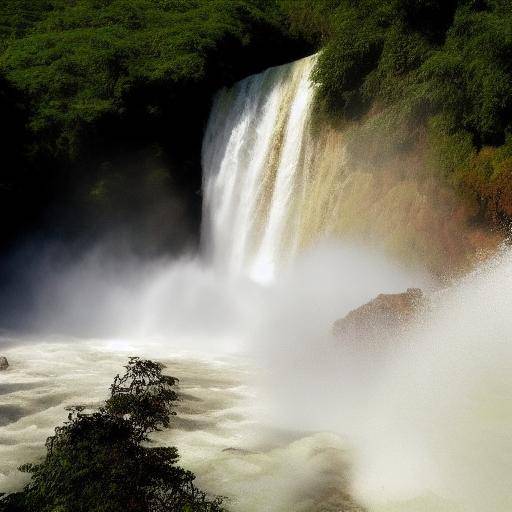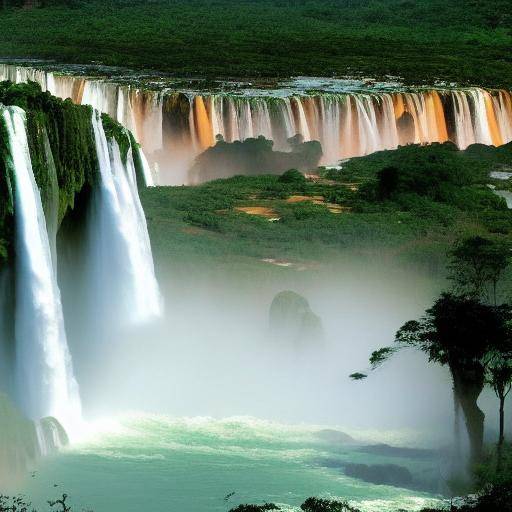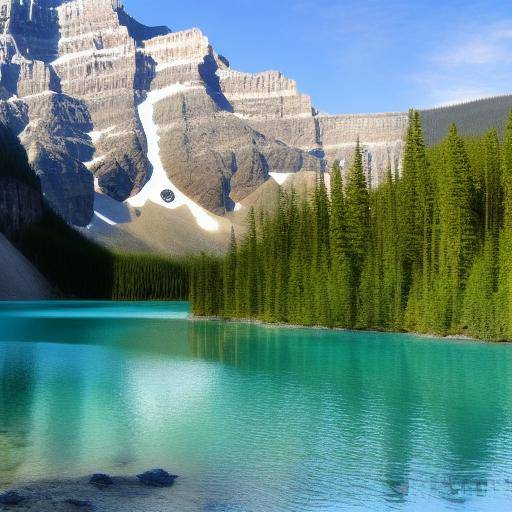
Niagara Falls, located on the US-Canada border, are one of the most impressive natural wonders in the world. With its imposing waterfall, its incomparable beauty and its powerful impact on the region, this natural phenomenon has captivated people from around the world. In this article, we will explore the majesty and history of Niagara Falls, as well as their relevance in Canada and their status as one of the most outstanding natural wonders. Join us on this journey to discover the fascinating and powerful wonder of nature that are the Niagara Falls.
Introduction
The Niagara Falls, with their impressive waterfalls, form part of a set of three cataracts on the Canadian-United States border, specifically between the province of Ontario and the state of New York. Its name comes from the word "Onguiaahra", which means "water noise", and rightly, since the roaring of the cataracts is a reflection of its immense natural power.
History and Background
The Niagara Falls have played a significant role throughout history, both in indigenous culture and in the development of the region. It is believed that the cataracts have about 12,000 years old, and have been a sacred place for the indigenous communities that inhabited the area long before the arrival of the European colonizers.
The Europeans arrived in the region in the seventeenth century, and the Niagara Falls quickly became a world-famous tourist attraction. Over the centuries, the cataracts have witnessed numerous historical events, from the prowess of the industry to sporting feats.
Analysis in Deep
Niagara Falls are not only an impressive natural phenomenon, but also play a crucial role in the supply of hydropower. Since the construction of the first hydroelectric power plant in the area in the early twentieth century to the present day, Niagara Falls have been a vital source of renewable energy.
Niagara Falls have also been a focus for environmentalists and conservation advocates who seek to protect this natural treasure for future generations. Because of its ecological importance and its value as a tourist destination, cataracts are the subject of constant efforts to preserve and sustain them.
Comprehensive review
Canada, as a host country of a significant part of the Niagara Falls, has embraced this natural icon as one of its main tourist attractions. The economic and cultural impact of cataracts in Canada is undeniable, and the government and local communities have worked together to preserve and promote this natural heritage.
In contrast, Niagara Falls have also experienced challenges related to tourism management, sustainability and the protection of the surrounding environment. The balance between conservation and sustainable tourism development has been a subject of constant discussion.
Comparative analysis
By comparing the Niagara Falls with other natural wonders of the world, their unique appeal and cultural significance stand out clearly. Although there are other impressive cataracts in different parts of the world, the majesty and accessibility of Niagara Falls make them an incomparable destination.
Moreover, the cross-border nature of the cataracts, shared between the United States and Canada, adds a unique dimension to its history and its international relevance. This characteristic distinguishes the difference of other natural wonders and makes them a symbol of international cooperation and natural beauty.
Practical Tips and Accessible Recommendations
If you are planning to visit the Niagara Falls, here are some practical tips to make the most of your experience:
- Plan ahead: Due to high tourist demand, it is advisable to plan your visit in advance, especially if you plan to perform specific activities, such as boat trips or museum visits.
- Explore the surroundings: In addition to witnessing the cataracts from different perspectives, such as the Canadian side and the American side, make sure to explore the natural parks and nearby attractions to enjoy a more complete experience.
- Consider the time of your visit: Niagara Falls offer different experiences throughout the year, from the majesty of spring and summer to the stunning winter beauty. Choose the time that best suits your preferences and expectations.
- Respect the environment: As a visitor, it is important to respect the natural environment of Niagara Falls. Follow the indications and recommendations of conservation to contribute to the preservation of this natural heritage.
- Discover history and culture: Take advantage of the opportunity to learn about the indigenous history and culture of the region, as well as the evolution of the falls over time. This will enrich your experience and understanding of the place.
Conclusion
In short, Niagara Falls represent an impressive fusion of natural power, fascinating history and cultural relevance. Over the centuries, they have left an indelible mark in the region of Canada, attracting visitors from around the world and serving as a powerful reminder of the amazing power of nature.
Beyond its tourist attraction, Niagara Falls have played a crucial role in history, sustainable energy, environmental conservation and international cooperation. His legacy will endure as one of the most impressive and significant natural wonders in the world.
FAQs
What is the best time to visit the Niagara Falls?
Spring and summer are usually the most popular moments to visit the Niagara Falls, as the weather is pleasant and you can enjoy the views in its splendor. However, winter also offers a unique scene with ice formation, so the best time can depend on your personal preferences.
How long do you need to visit the Niagara Falls?
The duration of the visit may vary according to your planned interests and activities. At least, it is recommended to book at least half a day to enjoy the main attractions and experience the grandeur of the falls.
What are the most popular activities to do in Niagara Falls?
Some of the most popular activities include boat trips such as the "Maid of the Mist", panoramic viewpoints, natural park exploration and helicopter excursions for a unique aerial perspective.
What is the difference between the Canadian side and the American side of Niagara Falls?
Both sides offer spectacular views of the falls, with different perspectives and experiences. The Canadian side tends to offer a more panoramic view, while the American side allows a closer experience to the falls.
What measures are being taken to preserve the Niagara Falls?
Various conservation and sustainability measures are being implemented, including careful tourism management, the protection of surrounding flora and fauna, the preservation of water quality and the promotion of responsible practices by visitors.
Do the Niagara Falls illuminate at night?
Yes, the Niagara Falls are illuminated with stunning multicolored lights at night, creating an impressive visual spectacle that attracts visitors and residents alike.
We hope that this guide has inspired you to discover the Niagara Falls and experience their natural power in person!


